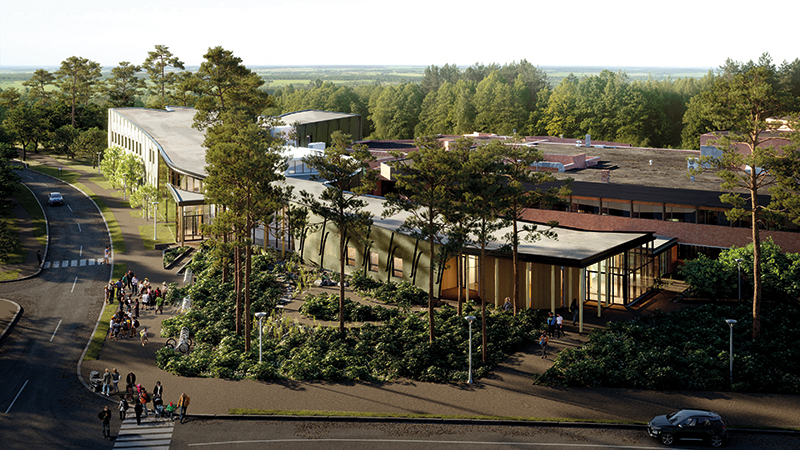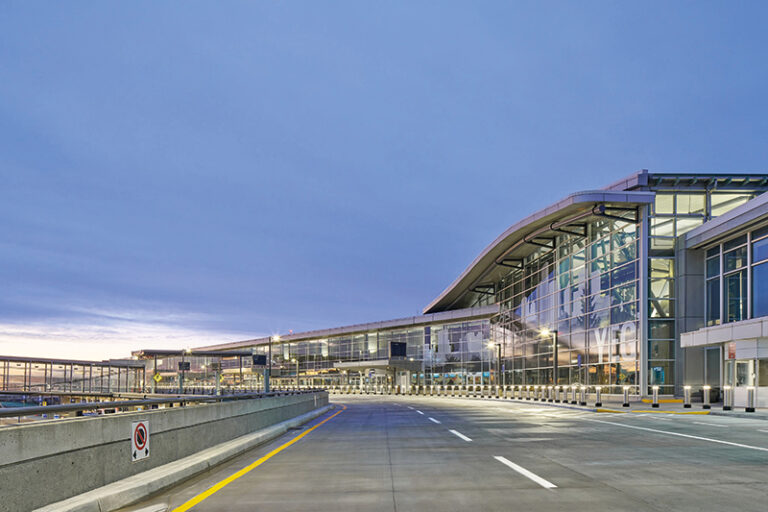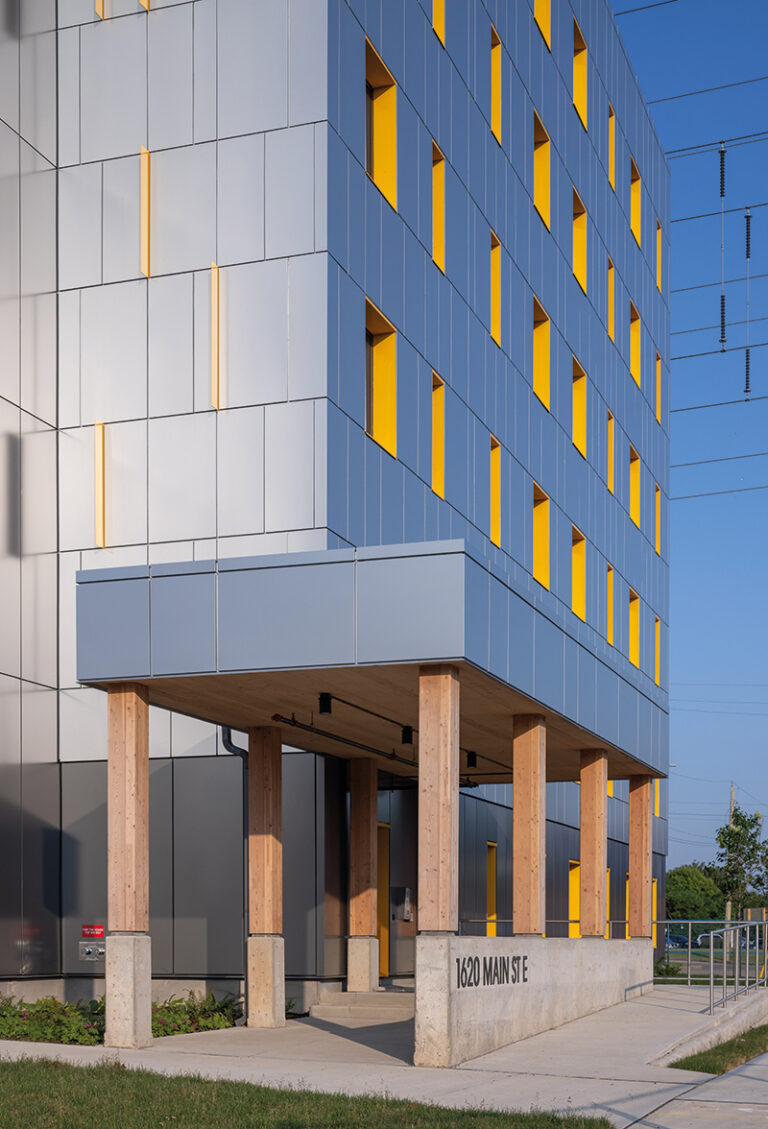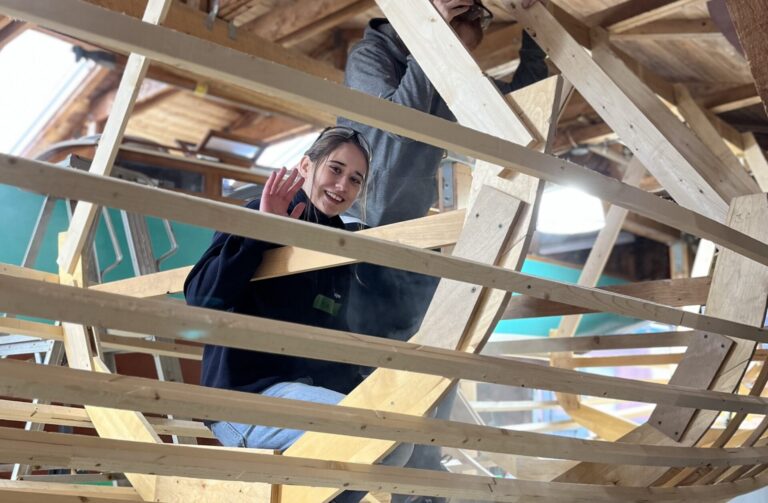The National Centre (provisionally named) for Indigenous Laws (NCIL) at the University of Victoria (UVic) is a project for Chandos Construction that showcases how truth and reconciliation principles can guide construction. It highlights Indigenous design, sustainability and community partnerships while earning industry recognition.
“There’s a purpose behind every detail of this building, which is dedicated to the study and practice of Indigenous laws,” said Tim Laronde, national director, Indigenous Strategies, Chandos Construction. “The team focused on inclusivity, sustainability and local needs to create a project that benefits the community now and in the future.”
Laronde explained that Chandos worked closely with the university and the consultant team to reflect its Indigenous Plan in the design and construction of the building. Indigenous perspectives were included at every step through consultation and collaboration. Key efforts include:
Working with Elders: Chandos partnered with the university’s Faculty of Law and consulted Elders and members of the Esquimalt, Songhees and W_SÁNEC (Saanich) Nations to align the project with the Truth and Reconciliation Commission’s calls to action.
Hiring local Indigenous workers and contractors: Indigenous contractors from Vancouver Island played a major role in the project, with 19 per cent of expenses going to businesses owned by Indigenous communities. Chandos also worked with the Victoria Friendship Centre to recruit Indigenous workers.
Supporting Indigenous suppliers: Chandos engaged Khowutzun Development Corporation (KDC), an Indigenous-owned firm, for civil and excavation work worth over $2 million. KDC partnered with smaller Indigenous contractors and bands, providing opportunities to work on large contracts and grow their expertise.
Fostering equity in the workforce: Nearly 28 per cent of total hours worked on the project came from workers from equity-seeking groups, including Indigenous workers.
Using technology for collaboration: BIM tools allowed Chandos to identify any conflicts ahead of time to avoid delays in construction, especially in the complicated hybrid mass timber and steel building structure. OpenSpace, a 360-degree photo documentation tool, allowed remote consultants to track progress and resolve issues quickly.
“The hybrid mass timber and steel structure required precision and innovation, and tools like BIM and OpenSpace allowed us to address challenges early, ensuring the project stayed on track. From moisture management plans for mass timber to designing ventilation systems for smudging ceremonies, every technical decision was made with care to honour the building’s purpose and the community it serves,” said Thomas Oster, senior project manager, Chandos Construction.
The design team of Two Row Architect, Teeple Architects and Low Hammond Rowe Architects played a large role in ensuring the project honoured Indigenous knowledge and traditions.
“As Indigenous leadership at UVic instructed us, ‘The building has to be a teacher, it has to be one of the professors.’ Now, as the National Centre for Indigenous Laws comes to life in the construction phase, it is clear that this building is already teaching, not only through its form, materials, and relationship to the land, but also through the collaborative process that brought it into being,” said Brian Porter, principal, Two Row Architect, an Indigenous-owned and operated firm from Six Nations of the Grand River reserve in southern Ontario.
The 2,680-square-metre NCIL building incorporates Coast Salish design elements that connect the structure to the surrounding environment. For example, instead of removing trees on the site, Chandos repurposed them as exposed structural columns throughout the building, reducing the building’s carbon footprint. Rain gardens for irrigation and stormwater management further demonstrate sustainable practices.
“Alongside the integrated design team, UVic and Chandos, we have worked to create a structure that, like the natural world, offers guidance, stories and lessons to those who enter. Seeing the design principles from those first conversations now realized in construction is a powerful reminder that buildings can be living expressions of Indigenous knowledge, and that true collaboration—grounded in respect and reciprocity, is itself a form of learning and teaching,” added Porter.
The use of mass timber on this project is another example that provides a carbon sink to reduce emissions from prefabricated construction materials. For the erection process, Chandos developed a comprehensive moisture management plan to avoid potential water ingress or moisture issues. Chandos’ additional sustainability approaches that support LEED Gold certification include: maximizing solar orientation, utilizing below slab HVAC, and ensuring the building uses 100 per cent sustainable electric energy. Incredibly, Chandos’ efforts have resulted in 83 per cent of waste being diverted from this project.
Another special feature is the building’s ventilation that has been designed to accommodate smudging ceremonies. It offers integrated controls with equipment designed to allow for quick filtration of smudging fumes following these ceremonies. The atrium space also offers natural ventilation.
“We’re thrilled to see the building come to life with classrooms and spaces that are appropriate for learning and teaching Indigenous laws,” says Freya Kodar, dean of law at the University of Victoria. “The space will support conversation, research, education and training about Indigenous law issues and questions.”
This project has also received a Canadian Architect Award of Excellence. While this space will house the world’s first joint degree in Indigenous legal orders and Canadian common law (JD/JID), its build story contains many successful firsts for the construction industry.
“This building is a central part of the transformative work of bringing Indigenous laws into our law school. Indigenous laws are not only located in texts, jurisprudence, and statutes, rather, they are revealed, deliberated upon and taught through lived experiences and interactions with the world around us,” says Sarah Morales, JD/JID director at the University of Victoria. “This building, and the sites of learning it houses, such as gathering spaces, an outdoor learning deck and a “maker space”, will create the opportunity for scholars, researchers and students to embody Indigenous laws through different pedagogical approaches.”
[This article appeared in the May/June 2025 issue of ReNew Canada.]
Featured image: The National Centre for Indigenous Laws (NCIL) at UVic, opening Summer 2025, will be a place to share Indigenous legal traditions. (University of Victoria Faculty of Law)












